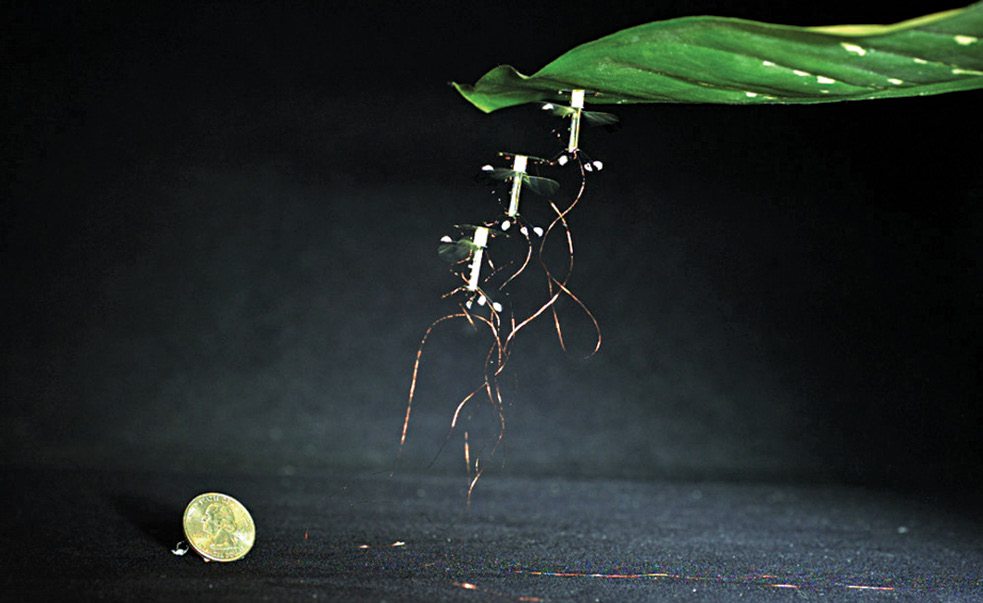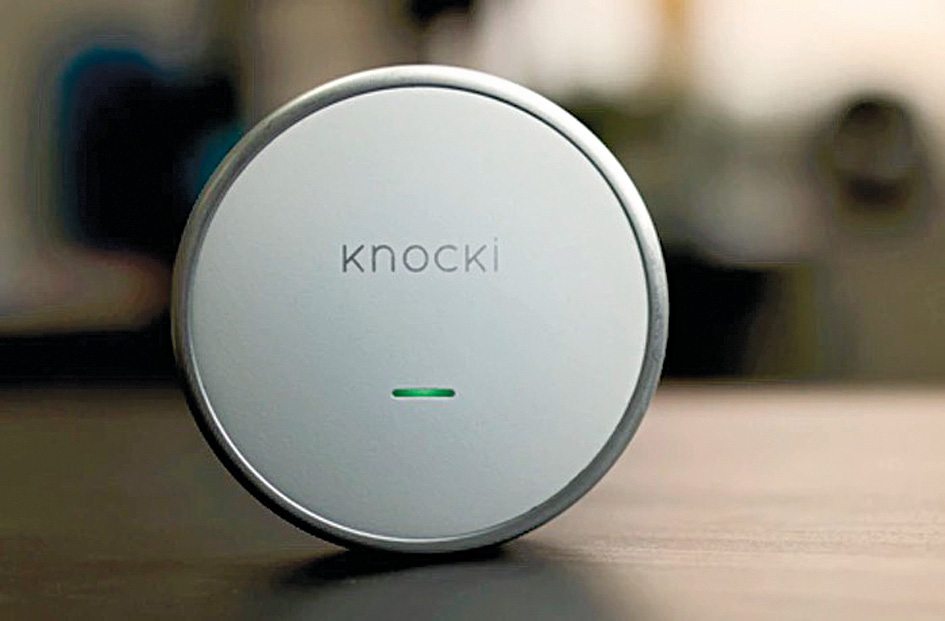World’s first holographic flexible smartphone
Scientists claim to have developed the world’s first holographic flexible smartphone that lets users interact with 3D videos and images without any headgear or glasses. They have named the device HoloFlex. It is capable of rendering 3D images with motion parallax and stereoscopy to multiple simultaneous users without head tracking or glasses.

HoloFlex features a 1920×1080 full-high-definition flexible organic light emitting diode (FOLED) touchscreen display. Images are rendered into 12-pixel-wide circular blocks showing the full view of the 3D object from a particular viewpoint. These pixel blocks project through a 3D-printed flexible micro-lens array consisting of more than 16,000 fisheye lenses. The resulting 160×104 resolution image allows users to inspect a 3D object from any angle simply by rotating the phone.
Among other applications of HoloFlex is holographic gaming. For example, in a game like Angry Birds, users can bend the side of the display to pull the elastic rubber band that propels the bird. When the bird flies across the screen, the holographic display makes the bird literally pop out of the screen in 3D.
Mini drone uses electrode patch to stick to surfaces
A robotics team at Harvard University, USA, has developed a method that would allow their insect-size flying robot, dubbed RoboBee, to conserve energy midflight, much as bees, bats and birds do. By attaching a shock-absorbing mount and a patch that conducts electricity, the researchers were able to direct the tiny robot to perch on a variety of surfaces and then take off again. When activated, the electrical charge held RoboBee in place, much like how a balloon would stick to a wall after it was rubbed against a wool sweater. Terminating the charge enabled the robot to detach from the surface and fly away.

The robot made its debut in 2013. It was the first robotic insect that was capable of hovering, and it was modified for the new study to allow it to land midflight.
Device that can test if your food is gluten-free
People who have food issues like the celiac disease get stressed when eating out, and end up avoiding eating out altogether. Celiac disease is an inherited autoimmune disease in which eating gluten can cause severe damage to the small intestine. There are currently no treatments or cures for this disease, except eating a diet without any gluten, which is a protein found in wheat, rye and barley.
But now, a discreet new device, small enough to fit into a pocket or purse, could make eating out an easier and safer experience for gluten-sensitive people. San Francisco based 6SensorLabs has developed the portable gluten-testing device called Nima, which can test food for the presence of gluten, providing results within minutes.

Using Nima, individuals can make sure their food is gluten-free by placing a tiny piece of their meal inside a disposable capsule, twisting the cap shut and inserting the capsule into Nima’s main sensor unit. Within two to three minutes, Nima lets them know if the food is safe to eat by displaying a smiley face on the screen if there is no gluten, or a frown if the result is positive for the protein.
Camera that wraps around objects to capture 360-degree views
Scientists have developed a camera that resembles a flat sheet of paper and is so thin and flexible that it could be wrapped around everyday objects such as desks, cars, streetlights and the like, to capture 360-degree views of the said objects. It can help turn any surface into a camera—the invention may lead to card-size cameras that can flex in order to increase their field-of-view.
Regular cameras take pictures from a single point in space, but this new device instead seeks to capture images using a flat grid of miniature cameras—something like an insect’s compound eye.
One possible approach for a camera that is a flexible sheet would involve rigid lenses attached to a pliable sheet. However, bending this sheet would result in gaps between the fields-of-views of the adjacent lenses. This could cause the resulting image to have missing information.

Instead, the researchers developed an elastic sheet made of flexible lenses. No matter how this sheet is bent, there are no gaps between the lenses. They developed a flexible array that consists of nearly 1100 lenses made of silicone rubber. By optimising the geometrical proportions of the lenses and the material properties of the sheet, they found that this array could produce high-quality images even when bent and twisted.
Miniature DNA thermometer, 20,000 times smaller than human hair
The trend of miniaturisation has now transformed a thermometer to a futuristic nano-scale device. A group of researchers from University of Montreal, Canada, has fabricated an ultra-small, programmable DNA thermometer, which is 20,000 times smaller than human hair. This invention is likely to produce accurate results over a wide range of temperatures and result in a linear ultra-sensitive response curve between fluorescence marker and temperature.
According to scientists, DNAs are heat-responsive. Simply putting, when excess heat is incident on the target DNA, it loses its double helix structure. Senior author and professor Alexis Vallée-Bélisle explaines that, biochemicals such as proteins or RNAs act as nano-temperature-sensors inside a living organism and exhibit corresponding movements by folding or unfolding. Inspired by such natural phenomena, scientists have tried to incorporate similar technology using DNA where it folds and unfolds at predefined temperatures.
Prof. Vallée-Bélisle explained that their research breakthrough is an initial step taken to realise the complexities of thermo-regulation system at nano-scale. As an example, he cited that human body is maintained at a temperature of 37°C but till now, researchers have little idea regarding how an individual cell contributes to maintain that.
Knocki can make any surface smart enough to respond to taps
Knocki is a small white wireless device that can sit or be mounted on any smooth surface to transform it into a smartremote for controlling home devices. Makers of Knocki have invented a patent-pending technology called SurfaceLink that is installed on Knocki to pick up taps that you make on the installed surface whether it is a wall, table top or door.
To get things started, you have to fire up the companion Android or iOS app and configure the tap sequence to do a particular task. Tap sequences can range from simple single taps to multiple taps to a combination of taps. Then, you can assign a tap sequence to do a particular task.

Knocki also serves as a security device. If you have it installed on your door and paired it with your home security system, you will be able to knock your way into your home by tapping the set password knock sequence. You can activate your security alarm and know when the door is opened. You can use Knocki to send pre-programmed alerts or texts to your family members to let them know that you are leaving or have reached home.
New battery has a lengthened lifespan
Researchers at University of California, Irvine, USA, have invented nano-wire based battery material that can be recharged thousands of times, moving us closer to a battery that would never require replacement. This breakthrough could lead to commercial batteries with greatly lengthened lifespans for computers, smartphones, appliances, cars and spacecraft.
Scientists have long sought to use nano-wires in batteries. The researchers have solved this problem by coating a gold nano-wire in a manganese-dioxide shell and encasing the assembly in an electrolyte made of a Plexiglas-like gel. The combination is reliable and resistant to failure.
The study leader, UCI doctoral candidate Mya Le Thai, cycled the testing electrode up to 200,000 times over three months without detecting any loss of capacity or power and without fracturing any nano-wire.
Peggy, the smart clothes peg
Unilever’s laundry detergent brand OMO has unveiled the world’s first connected clothes peg named Peggy in the Australian market. On top of Peggy there is a UV sensor, which is used to monitor the amount of sunlight. This helps the connected app to tell the user if the conditions are suitable for drying clothes. This same information is cemented with the help of a temperature sensor and a humidity sensor. Both sensors also let the user know if the weather outside is being dominated by rain clouds or not. The connected app also lets you know if rains are imminent and whether you should collect the clothes from outside.

Peggy is being marketed with OMO, and so the connected app also features tools that help users with wash cycles. For example, the app tells which time is best suitable for washing your clothes. Depending upon the wash load, it calculates the time that will be taken to complete the wash and dry cycles.






